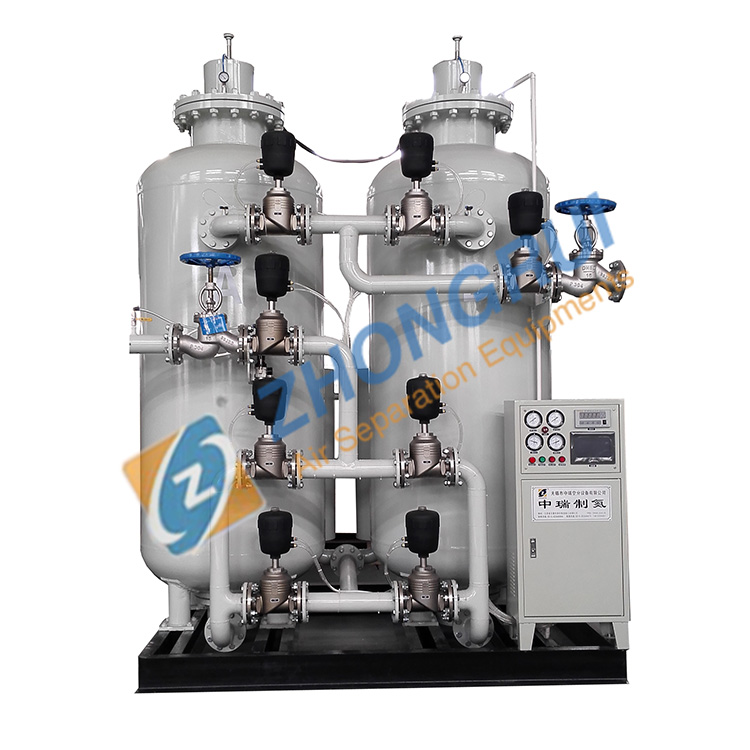News
Working principle of pressure swing adsorption (PSA) oxygen generator
2023-01-27Oxygen, as an abundant gas in the air, is inexhaustible and inexhaustible. It is colorless, odorless, transparent, and life-sustaining. The content of oxygen (O2) in the air is 20.9476% (the volume components of various gases in the air are: N2: 78.084%, O2: 20.9476%, argon: 0.9364%, CO2: 0.0314%, and others include H2, CH4, O3, SO2, NO2, etc., but the content is very small), the molecular weight is 32, and the boiling point is -183°C.

The pressure swing adsorption oxygen generator is an automatic equipment that uses zeolite molecular sieve as the adsorbent and uses the principle of pressure adsorption and desorption to absorb and release nitrogen from the air, thereby separating oxygen. Zeolite molecular sieve is processed by a special pore-type treatment process, and the spherical particle adsorbent with micropores on the surface and inside is white. Its pore-type characteristics enable it to realize the dynamic separation of O2 and N2. The separation effect of zeolite molecular sieve on O2 and N2 is based on the small difference in the dynamic diameter of the two gases. N2 molecules have a faster diffusion rate in the micropores of zeolite molecular sieves, while O2 molecules have a slower diffusion rate. The diffusion of water and CO2 in compressed air is not much different from that of nitrogen. What is finally enriched from the adsorption tower is oxygen molecules.
Pressure swing adsorption (PSA) oxygen generator is to use the selective adsorption characteristics of zeolite molecular sieves, and adopt the cycle of pressure adsorption and decompression desorption to make compressed air alternately enter the adsorption tower to achieve air separation, thereby continuously producing high-purity product oxygen.
After the air is compressed by the air compressor, after dust removal, oil removal and drying, it enters the air storage tank, and enters the left adsorption tower through the air inlet valve and the left inlet valve. The tower pressure rises, and the nitrogen molecules in the compressed air are absorbed. The zeolite molecular sieve is adsorbed, and the unadsorbed oxygen passes through the adsorption bed, and enters the oxygen storage tank through the left gas production valve and the oxygen gas production valve. This process is called left suction, and the duration is about 60 seconds. After the left suction process is over, the left adsorption tower and the right adsorption tower are connected through a pressure equalizing valve to balance the pressure of the two towers. This process is called pressure equalization and lasts for 3 to 5 seconds. After the pressure equalization, the compressed air enters the oxygen storage tank through the air intake valve and the right intake valve. This process is called right suction, and the duration is about 60 seconds. At the same time, the oxygen adsorbed by the zeolite molecular sieve in the left adsorption tower is decompressed and released back to the atmosphere through the left exhaust valve. This process is called desorption. Conversely, when the left tower is adsorbing, the right tower is also desorbing at the same time. In order to discharge the nitrogen released from the depressurization in the molecular sieve to the atmosphere, the oxygen passes through a normally open backflush valve to sweep the adsorption tower being desorbed, and the oxygen in the reverse tower is blown out of the adsorption tower. This process is called backflushing, and it is carried out simultaneously with desorption. After the right suction is finished, it enters the pressure equalization process, then switches to the left suction process, and the cycle continues.


